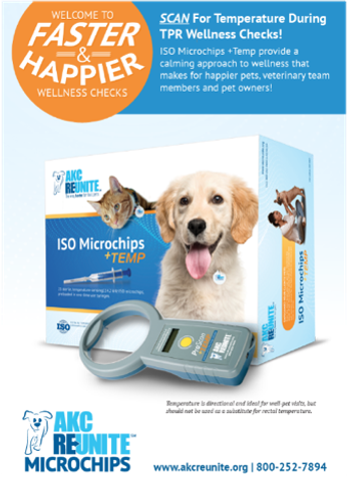Hybrid model
This model allows 1 client at a time into the building for pet appointments only; medication and food would still be picked up at the curb. Lopez noted that although clients would be able to choose curbside services at check-in, the lobby would remain closed, and clients will stay curbside to check-in for their appointment only. In addition, clients would be able to enter the building only if they wore masks, sanitized their hands, and maintained social distancing.
Fully open model
This model grants clients restricted access: eg, only 1 (masked) person per appointment would be allowed inside. Additionally, the receptionist or customer service representative would escort clients to exam rooms to prevent the lobby from becoming crowded. But what works for one establishment “may not work for yours,” Lopez admitted, adding that “maybe your team has different preferences and concerns.” The important thing is that everyone understands that the plan is put in place to guarantee that what is in everyone’s best interest is what takes place.
3. Craft a clear communication strategy
Because clients have grown accustomed to curbside care, it is important to be mindful of those individuals who will want to come in for their pets’ appointments but who will nevertheless feel anxious. Lopez recommends informing everyone of the operational change by:
- Sending emails announcing that clients will be allowed to enter the building and under what restrictions
- Sharing posts, banners, and/or photos on social media that make the new policy clear
- Updating signage (including posters and flyers) and your website
- Revising your online booking message
“Communication is so important,” Lopez stressed. “You shouldn’t…communicate [only] once you’re ready to make the transition; instead, continue to communicate at least quarterly to let them know if anything—or nothing—has changed at your practice…I recommend creating scripts for your team to help them effectively communicate with clients during the frustrating conversations that can arise.”
4. Enforce the plan
When it’s time to implement the plan, practice leaders must support it since these individuals are responsible for identifying who, what, where, and when each step of the change will take place.2 To initiate the transition, Lopez recommends creating a workflow chart that specifies the responsibilities of everyone on staff (veterinarians, technicians, customer service personnel, etc.) and devising talking points to use with clients.
5. Measure and analyze the process
Finally, Lopez reminded the audience that modifications and adjustments will need to be made and suggested using the morning or weekly meetings to ask for feedback and address setbacks. In closing, she said: “Your team’s input is so important because we, as leaders, don’t always know what our staff is facing. It’s always best to hear from the ones on the frontlines.”
References
- Mervosh S, Lee JC, Gamio L, Popovich N. See which states are reopening and which are still shut down. New York Times. Month day, 2020.
- 6 Steps Towards Implementing Change in an Organization. CMOE. Published November 27, 2018. https://cmoe.com/blog/six-steps-to-change-in-organ







